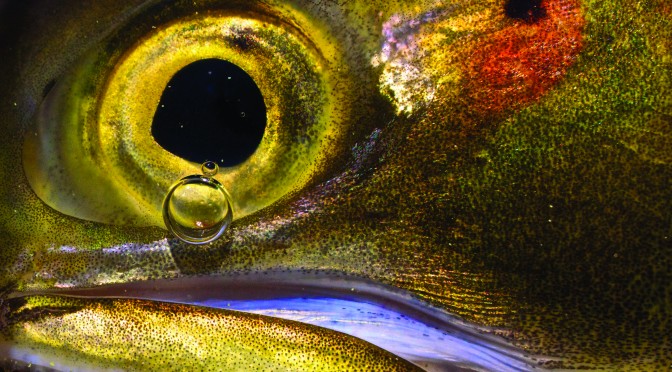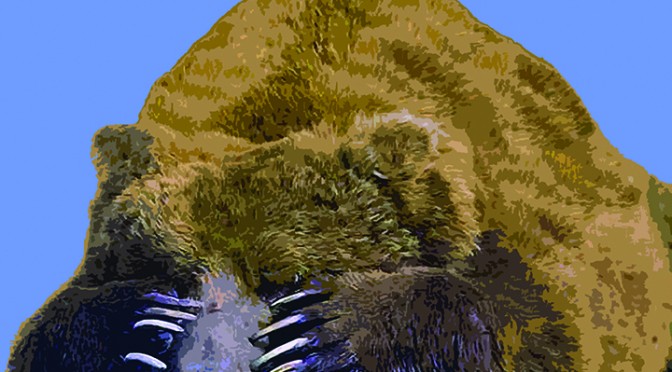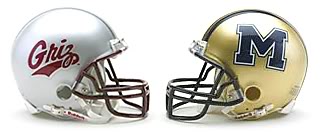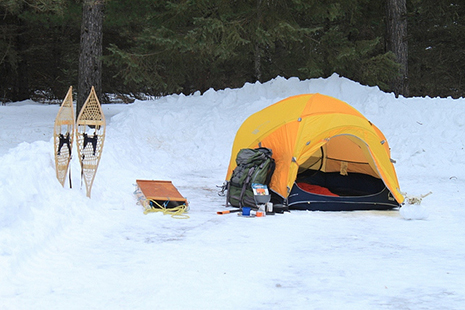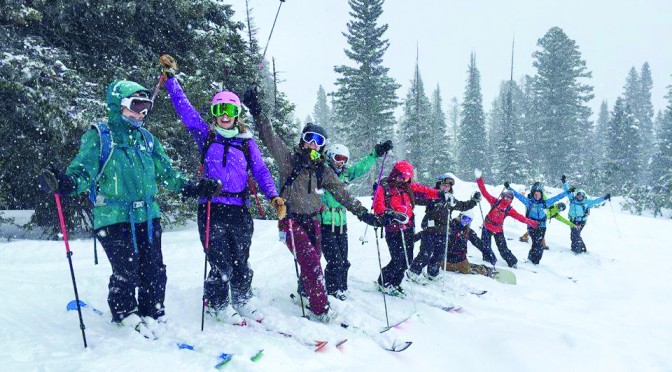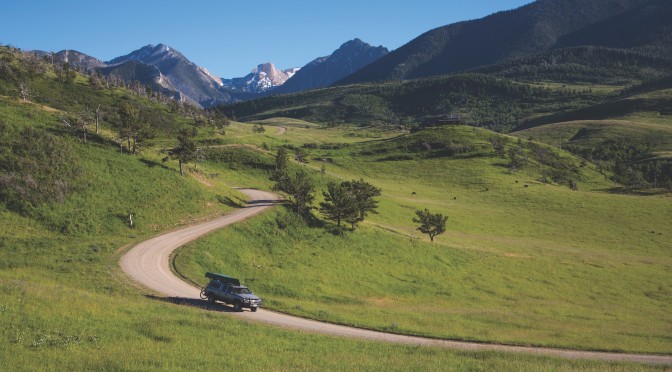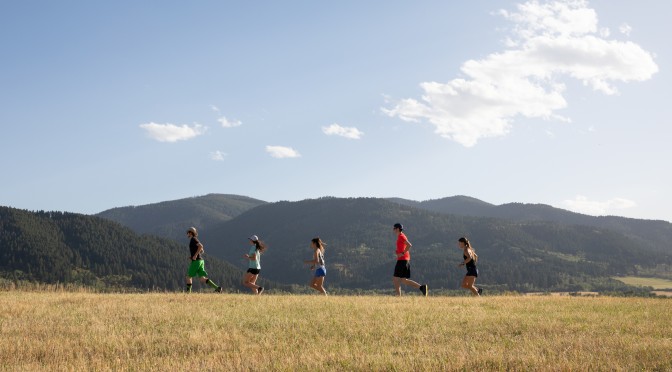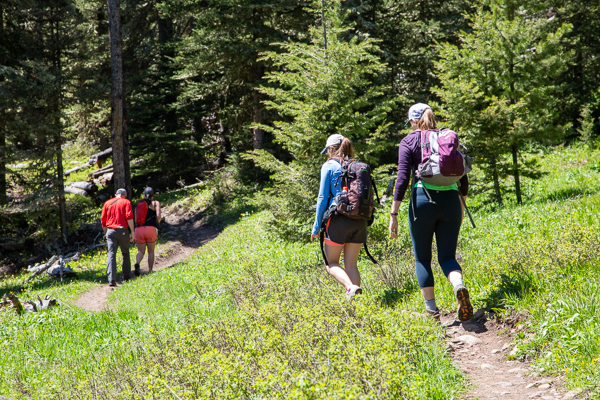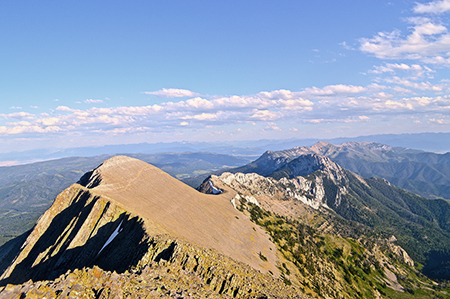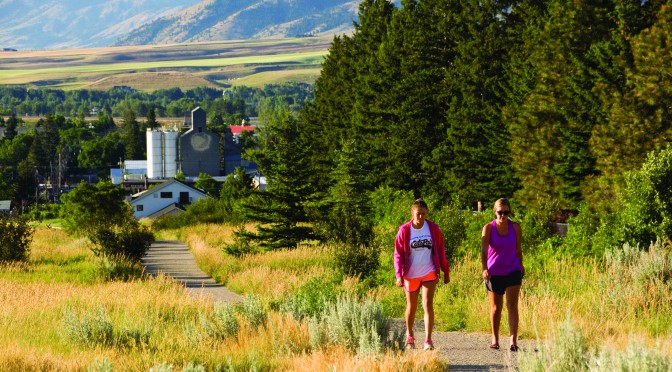by the editors
A fishing guide for the attendees of Trout U.
Ever wonder why Montana State is nicknamed Trout U? Because the Bozeman area’s got some of the best trout water in the world, that’s why. You have the privilege of taking classes less than an hour from three top-notch trout streams, and dozens of other fishing options. From alpine lakes in the backcountry to valley streams near town, MSU truly is an angler’s paradise.
If you’re new to the sport or new to the area, the first thing you’ll want to do is grab a copy of the Cast fishing guide. This local publication is full of everything you need to know about fishing in southwest Montana, from matching the hatch to how to get geared up. Once you have your bearings, you need only head to the river. With a little practice—and patience—you’ll be catching your limit in no time. Here’s some basic information to get you started.
Essential Gear
Walk into any outdoor store or fly shop, and the quantity, diversity, and variation—not to mention prices—of fishing gear can be overwhelming. Luckily, it’s not all essential to having fun and catching fish. A good all-around setup will keep you casting and catching all season, without breaking the bank.
For fly fishing, you’ll need a rod, reel, line, leader, and tippet. A good 9-foot, 5-weight, fast-action rod should handle everything from lightweight dry flies to heavier streamers. Match it with a 5-weight reel and a WF5 (weight-forward 5-weight) fly line. A 9-foot 5X leader and a range of tippet material, from 2X-6X, should accommodate most scenarios. Confused yet? Don’t worry; it makes sense once it’s all in your hands.
Next, get yourself some waders and wading boots, especially if you plan to fish in late fall, winter, and/or early spring. Be sure to use a wading belt so your waders don’t fill with water in the event of a plunge. Polarized sunglasses are great for spotting fish, although they can be expensive and are certainly not required.
Organize your flies in a fly box or sleeve; bring nippers for trimming line, floatant to keep your dry flies on top of the water, and pliers or forceps to removing hooks. Pack it all into a small chest-pack, butt-pack, or vest to keep it organized.
Where to Go
Hyalite Creek
The road to Hyalite Reservoir follows this creek and there are plenty of pullouts. Small rainbow trout are plentiful, and a well-presented dry fly will almost certainly entice a strike. For slightly larger fish, head up to the reservoir.
Gallatin River
The valley’s namesake waterway is a great option, thanks to its abundant public access, proximity to town, and high numbers of fish. Whether you fish the upper river in Gallatin Canyon or the lower section out in the valley, taking the time to walk a little ways from your car provides solitude and better fishing. The lower stretch holds larger fish and can provide good dry-fly fishing, especially on cloudy days. Cameron Bridge, Axtell Bridge, and Williams Bridge are all great starting points. Further south, Hwy. 191 follows the river through the canyon on the way to Big Sky and numerous pullouts access the river.
Lower Madison River / Bear Trap Canyon
Head west and reach the picturesque Bear Trap in less than 30 minutes. From the trailhead, hike along the east side of the river to access nearly eight miles of pocket-water, deep holes, and weedbeds. Generally speaking, this section of river is not known as a dry-fly haven, and it’s not the easiest place to learn how to properly drift an artificial fly. But if you’re after a big brown, the Madison’s your spot. Strip big, ugly streamers like a zonker, double bunny, or wool-head sculpin.
Events
The fishing calendar is full January through December, but certain events stand out. From film festivals to fly-tying clinics, there’s always something for the trout enthusiast. Below are a few highlights; for more, check out Outside Bozeman’s event calendar.
Wednesdays
Fly-tying – Big Sky. Every Wednesday evening, all year long, the pros at Gallatin River Guides teach a fly-tying class. The atmosphere is informal, so whether you’ve tied flies before or not, it’s a great opportunity to work on your skills. Details here.
August 29
Upper Gallatin River Cleanup – Big Sky. Before you get too bogged down in schoolwork, lend a helping hand to the good folks at the Gallatin River Task Force. Clean rivers mean healthy fish, and healthy fish mean good fishing. Details here.
August 30 – August 31
Fly Fishing & Outdoor Festival – Ennis. If you fish, odds are you’ll be spending lots of time in Ennis, a drinking town with a fishing problem about an hour west of Bozeman. Celebrate the end of summer with vendors from throughout the industry and activities including fly-tying demos, casting clinics, and more. Details here.
September 13-14
Trout Spey Days – West Yellowstone. Whether you’ve heard of spey casting or not, this event is sure to be intriguing. The legendary fly shop Big Sky Anglers hosts a weekend of classroom seminars and on-water clinics, all in the fishing hamlet of West Yellowstone, just outside the Park. Details here.
November 3
All waters close to fishing – Yellowstone National Park. After a long summer and a productive fall, it’s time to give the Park’s trout a break for the long winter ahead. They’ll be well-rested and hungry come spring.
February 23
TroutFest Banquet – Bozeman. The Madison-Gallatin chapter of Trout Unlimited (TU) hosts its annual fundraiser every February. The local TU chapter is instrumental in fighting for access, keeping rivers clean, and keeping trout healthy. Details here.

